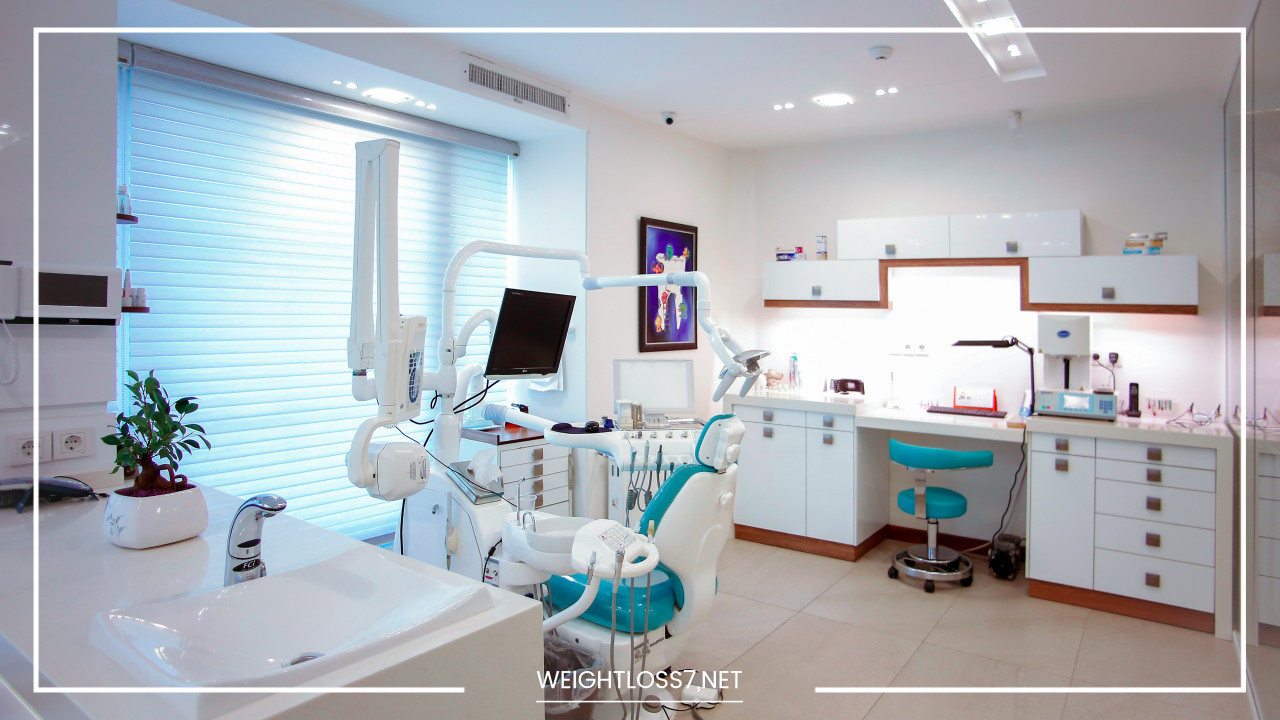How Dental Technology is Revolutionizing Your Smile

Dental Technology
Shining Bright: How Dental Technology is Transforming Your Smile
The dentist’s office – a place that might conjure up images of uncomfortable drills and lengthy procedures. But the reality of modern dentistry is far from what it used to be.
Thanks to continuous advancements in dental technology, visiting the dentist has become a more comfortable, efficient, and even predictable experience.
This blog post delves into the exciting world of dental technology, exploring how it’s impacting every aspect of oral healthcare, from diagnosis and treatment to patient comfort and communication.
We’ll delve deeper into the specific technologies being used, their advantages, and even cast a glimpse into the future of what’s to come.
Diagnosis Gets a Digital Makeover
Gone are the days of messy, gag-inducing traditional impressions. Intraoral scanners have revolutionized the way dentists capture images of your teeth and gums.
These compact, wand-like devices take 3D digital scans of your mouth, creating highly detailed and accurate representations. This translates to:
- Improved Accuracy: Digital scans eliminate the potential for human error inherent in traditional impressions, leading to a more precise diagnosis and treatment plan. Studies have shown that digital impressions can be up to 9 times more accurate than traditional methods.
- Enhanced Comfort: Say goodbye to the uncomfortable feeling of trays filled with goo! Intraoral scanners are quick and painless, making the experience much more pleasant, especially for patients with a strong gag reflex.
- Faster Results: Digital scans can be viewed instantly on a chairside monitor, allowing dentists to discuss treatment options with you right away. This eliminates the need for return visits solely for impression creation.
Behind the Scenes: How Intraoral Scanners Work
Intraoral scanners utilize a combination of technologies to capture detailed images of your mouth. Here’s a breakdown of the process:
- Confocal Laser Scanning: A low-powered laser beam is swept across the teeth and gums, capturing data on the surface reflections. This data is used to create a precise 3D point cloud of the oral structures.
- Optical Imaging: Some scanners may also incorporate visible light cameras to capture color information, providing a more realistic representation of your teeth and gums.
Treatment Evolves with Cutting-edge Techniques
Dental technology isn’t just about diagnostics; it’s also transforming treatment procedures. Here are some of the exciting advancements making waves in dentistry, and a deeper dive into their applications:
- Computer-Aided Design/Computer-Aided Manufacturing (CAD/CAM): This technology allows for the creation of custom-designed dental restorations, like crowns, bridges, and veneers, using digital scans and milling machines. This translates to:
- Precise Fit and Aesthetics: CAD/CAM restorations are incredibly accurate and can be designed to perfectly match the size, shape, and color of your surrounding teeth. This ensures a natural look and a comfortable fit.
- Faster Treatment Times: With traditional methods, multiple appointments were needed for impression creation, fitting, and placement of the restoration. CAD/CAM allows for the design and creation of some restorations in a single visit, significantly reducing treatment time.
- Stronger, More Durable Restorations: The materials used in CAD/CAM restorations are often stronger and more durable than traditional materials, leading to restorations that last longer.
The CAD/CAM Workflow:
- Digital Impression: An intraoral scan captures a precise 3D image of the prepared tooth and surrounding dentition.
- Computer-Aided Design: Using specialized software, the dentist virtually designs the restoration to fit perfectly within the prepared space. Factors like bite, function, and aesthetics are considered during this design phase.
- Computer-Aided Manufacturing: The design is then transferred to a milling machine, which precisely carves the restoration from a block of ceramic or composite material.
- Placement and Bonding: The dentist ensures a proper fit of the restoration and then bonds it securely to the prepared tooth.
- Laser Dentistry: Lasers are finding increasing applications in dentistry, offering several advantages over traditional techniques. Here’s a closer look at some of the procedures where lasers are used:
- Soft Tissue Procedures: Lasers can be used for precise removal of gum tissue during procedures like crown lengthening or frenectomy. This offers several benefits, including minimal bleeding, faster healing times, and reduced discomfort compared to traditional scalpel techniques.
- Hard Tissue Procedures: Lasers can be used for the removal of tooth decay or the preparation of teeth for fillings. This can be a more comfortable option for patients with sensitive teeth, as lasers minimize the need for anesthesia and reduce vibration during the procedure.
- Reduced Bleeding and Discomfort: Lasers can also be used for procedures like gum disease treatment. They can target specific areas of infected tissue, minimizing damage to healthy tissue and promoting faster healing. Additionally, lasers can be used for frenectomies (removal of a frenulum, the tissue connecting your lip or tongue to your gums) with minimal bleeding and discomfort.
A Smile of Confidence: The Power of Cosmetic Dentistry
For many, a brighter, more confident smile is a top priority. Dental technology is at the forefront of advancements in cosmetic dentistry, offering a variety of options to achieve your desired smile:
- Digital Smile Design: Software allows dentists to virtually create a mock-up of your desired smile outcome. This collaborative approach involves taking into account factors like facial symmetry, tooth proportion, and your specific aesthetic goals. You can see a digital preview of your potential smile before any treatment begins, allowing for a more informed decision and ensuring you achieve the results you envision.
- Teeth Whitening Options: Beyond traditional in-office whitening treatments, there are now a variety of patient-administered whitening options available. These include dentist-prescribed take-home whitening kits with professional-grade bleaching agents that deliver effective results at your convenience.
- Clear Aligners: These virtually invisible alternatives to traditional braces are a popular choice for adults seeking orthodontic treatment. Clear aligners utilize a series of custom-made clear trays that gradually move your teeth into their desired positions. They are typically more comfortable than traditional braces and offer a more discreet treatment option.
Empowering Patients: Communication and Education
Dental technology isn’t just about fancy equipment; it’s also about empowering patients. Here’s how advancements in communication and education are changing the dental experience:
- Intraoral Cameras: These tiny cameras project magnified images of your teeth onto a chairside monitor, allowing you to see exactly what the dentist sees. This fosters better communication and understanding of your dental health. By visualizing any problems firsthand, you can be more engaged in discussions about treatment options.
- Educational Tools: Many dental practices utilize educational software that provides patients with interactive information about procedures, oral hygiene practices, and dental conditions. These tools can help you make informed decisions about your dental care and empower you to maintain good oral health at home.
The Future of Dentistry: A Glimpse Ahead
The field of dental technology is constantly evolving. Here are some exciting possibilities on the horizon that could further revolutionize dentistry:
- TeleDentistry: The use of virtual consultations could allow for remote diagnosis, follow-up appointments, and even certain treatment procedures. This could be particularly beneficial for patients in rural areas or those with limited mobility. Imagine being able to consult with a dentist from the comfort of your own home!
- Artificial Intelligence (AI): AI could play a significant role in analyzing dental scans to identify early signs of decay or gum disease. This could lead to earlier intervention and improved preventative care. AI could also be used to personalize treatment plans and predict potential outcomes.
- Regenerative Dentistry: This field holds the potential to regenerate damaged or lost tooth structures. Researchers are exploring ways to use stem cells and other technologies to stimulate the growth of new tooth tissues. This could revolutionize dental care by offering a way to repair or even regrow teeth, eliminating the need for traditional fillings, crowns, or implants.
Smiling with Confidence: The Takeaway
Dental technology is transforming the dental landscape, making procedures more comfortable, efficient, and predictable.
From improved diagnostics and treatment techniques to enhanced communication and patient education, the benefits are undeniable.
With these advancements, achieving and maintaining a healthy, beautiful smile is more accessible than ever before. So, the next time you visit the dentist, embrace the technology – it’s there to help you shine brighter!
Beyond the Blog: Taking Action
Empowered by this knowledge of dental technology, you can take a more proactive approach to your oral health. Here are some steps you can take:
- Schedule Regular Dental Checkups: Regular dental visits allow your dentist to identify and address any potential problems early on. With the help of digital diagnostics, these checkups can be even more efficient and informative.
- Ask About Advanced Technologies: Don’t hesitate to inquire about the technologies available at your dental practice. Discuss with your dentist how these technologies can benefit your specific needs and treatment goals.
- Embrace Preventative Care: Taking good care of your teeth at home is essential for maintaining good oral health. Brushing twice a day, flossing daily, and maintaining a healthy diet can help prevent problems before they start.
By staying informed about dental technology and taking an active role in your oral health care, you can achieve a healthy, beautiful smile that will last a lifetime.
Beyond the Benefits: Addressing Potential Concerns
While dental technology offers a wide range of advantages, it’s also important to address some potential concerns:
- Cost: Some of the newer technologies may be more expensive than traditional methods. However, the long-term benefits, such as improved accuracy, faster treatment times, and potentially less invasive procedures, can outweigh the initial cost. Additionally, many dental insurance plans are starting to cover the costs associated with certain dental technologies.
- Accessibility: Not all dental practices may have access to the latest technologies. If you’re interested in a specific technology, inquire with your dentist or research practices in your area that are equipped with the technology you desire.
- Over-reliance on Technology: While technology plays a valuable role in dentistry, it shouldn’t replace the dentist’s expertise and experience. A skilled and experienced dentist will utilize technology to enhance their knowledge and skills, ultimately leading to better patient care.
The Human Touch: The Dentist-Patient Relationship
Despite the advancements in technology, the dentist-patient relationship remains crucial. A good dentist will take the time to understand your individual needs and concerns, explain treatment options clearly, and ensure you feel comfortable throughout the process.
Finding the Right Dentist for You
With the growing number of dental technologies available, finding the right dentist who aligns with your needs is important. Here are some tips:
- Ask for Recommendations: Talk to friends, family, or your doctor for recommendations on dentists who utilize advanced technologies.
- Research Online: Many dental practices have websites that showcase the technologies they offer. You can also read patient reviews online to get a sense of the dentist’s approach and bedside manner.
- Schedule a Consultation: Schedule a consultation with a dentist to discuss your dental health goals and inquire about the technologies they utilize. This allows you to ask questions and get a feel for the dentist’s personality and communication style.
Final Word: A Brighter Future for Smiles
The future of dentistry is bright, thanks to continuous advancements in technology. From improved diagnostics and treatment techniques to empowering communication and education tools, dental technology is transforming the way we care for our oral health.
By embracing these advancements and taking an active role in your oral health, you can achieve a healthy, beautiful smile that will last a lifetime.
So, ditch the fear of the dentist’s chair and embrace the exciting new era of dental technology – a future where a bright smile is not just a dream, but a reality.

















